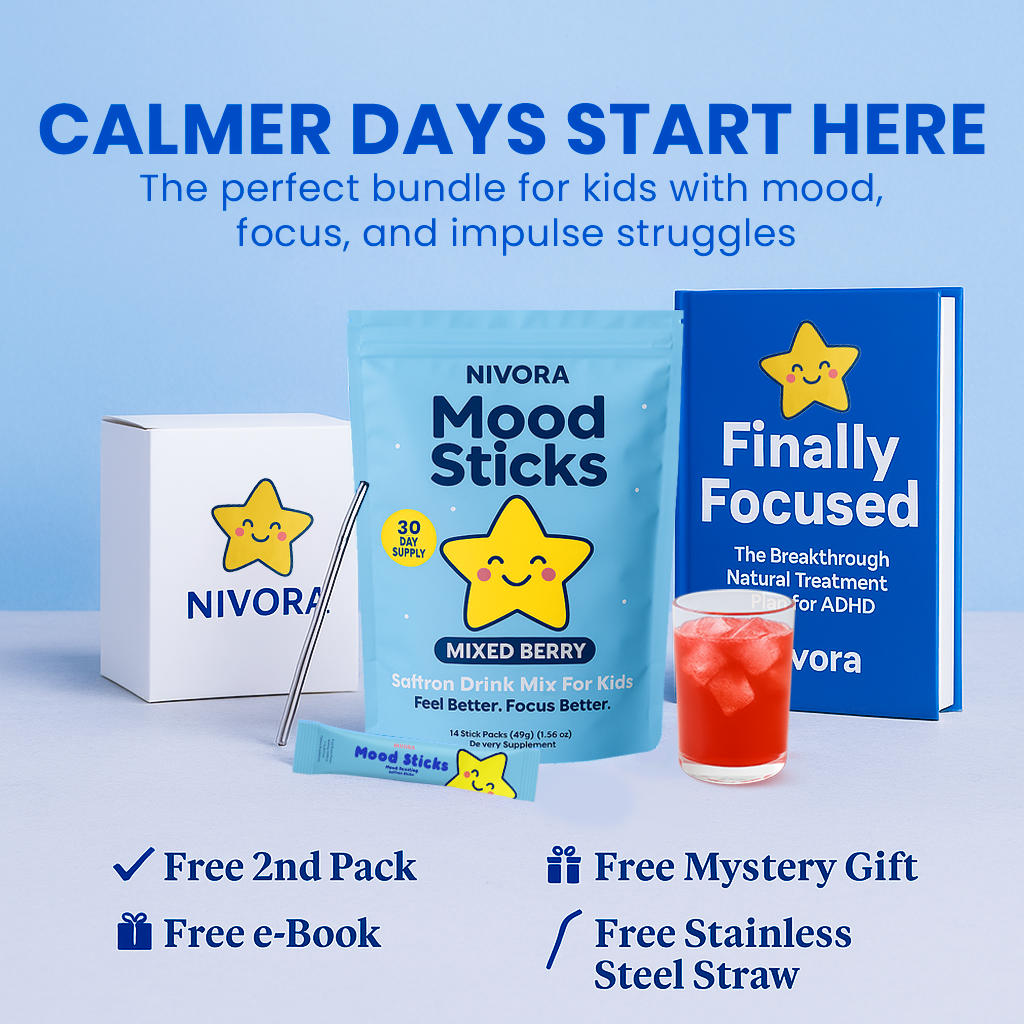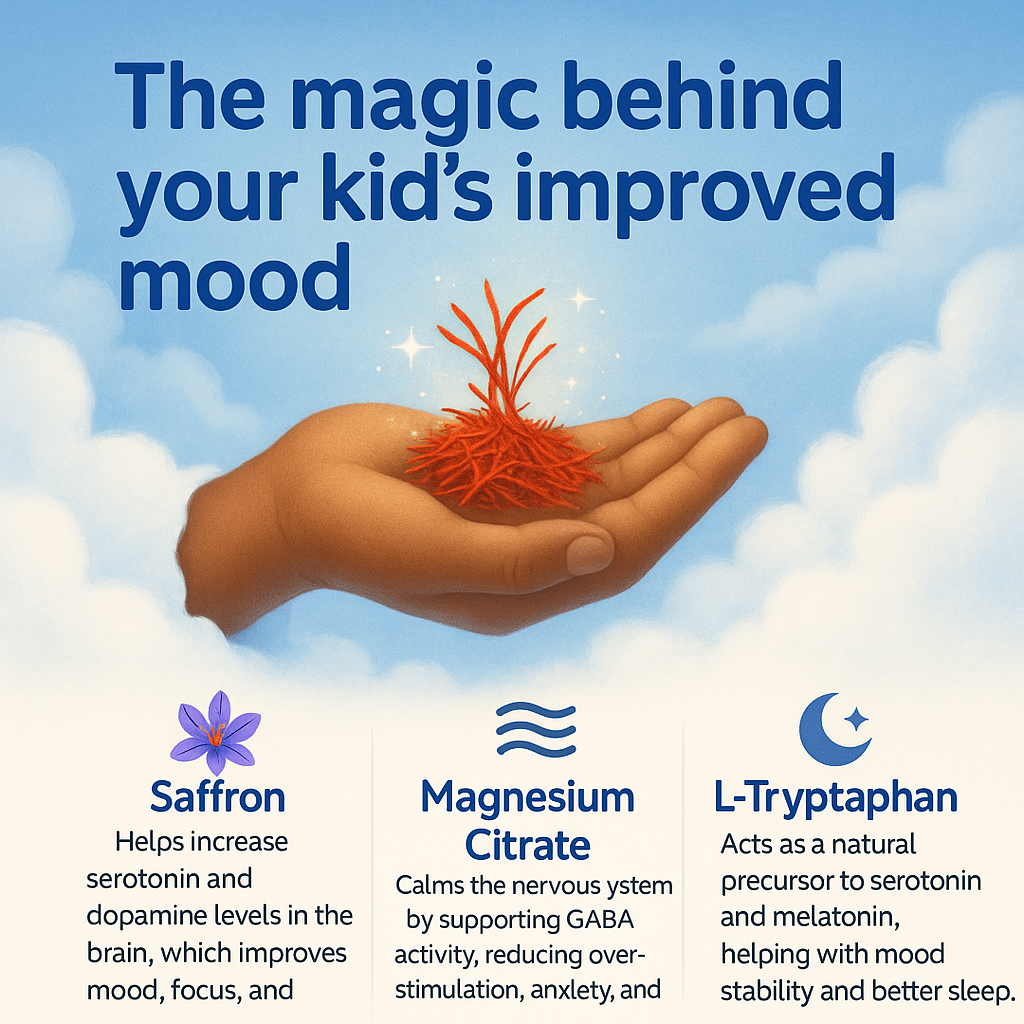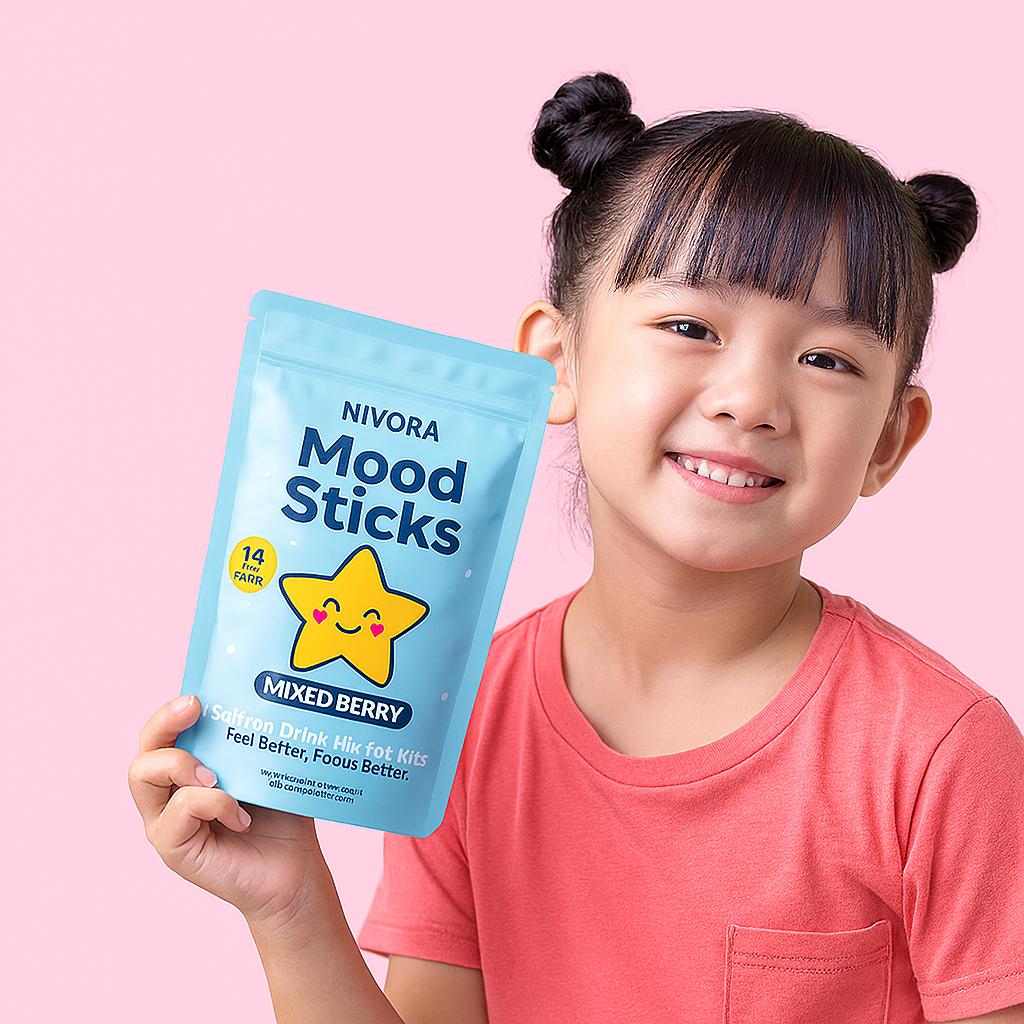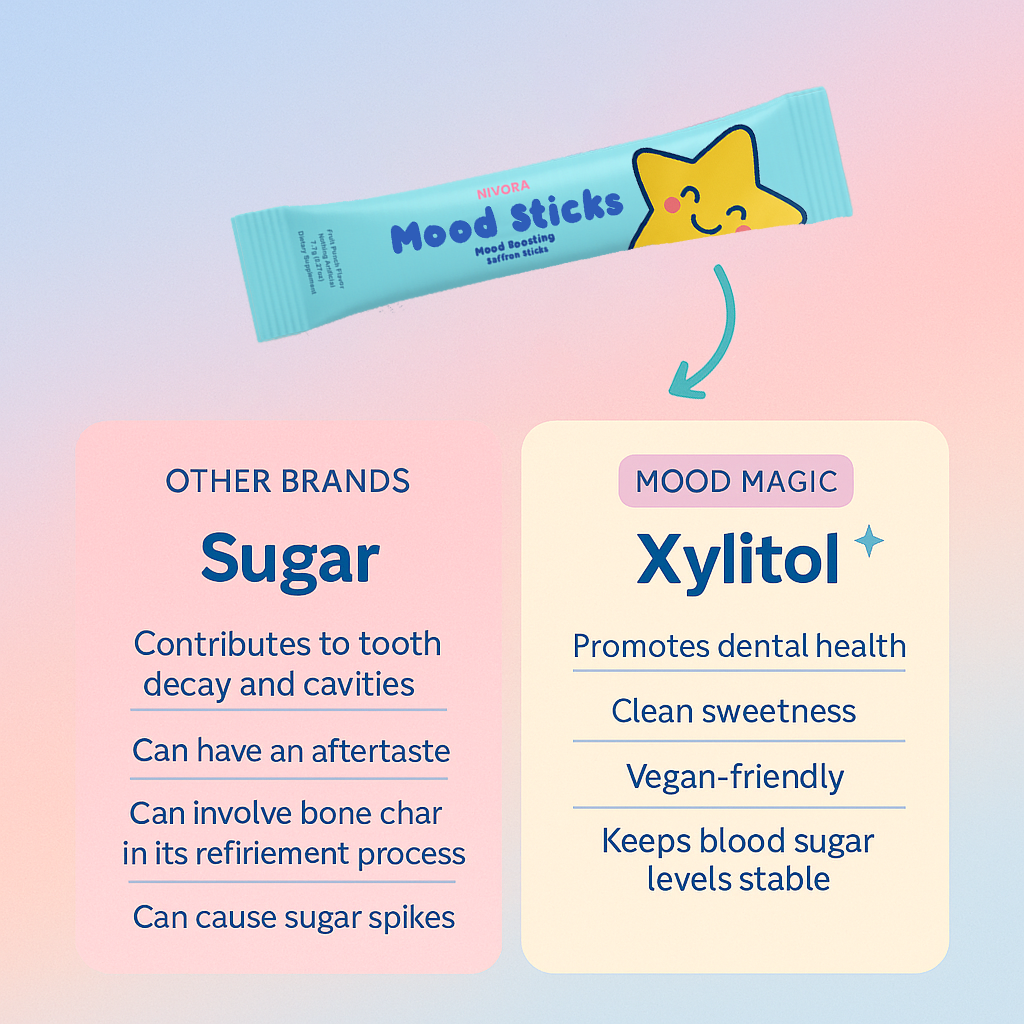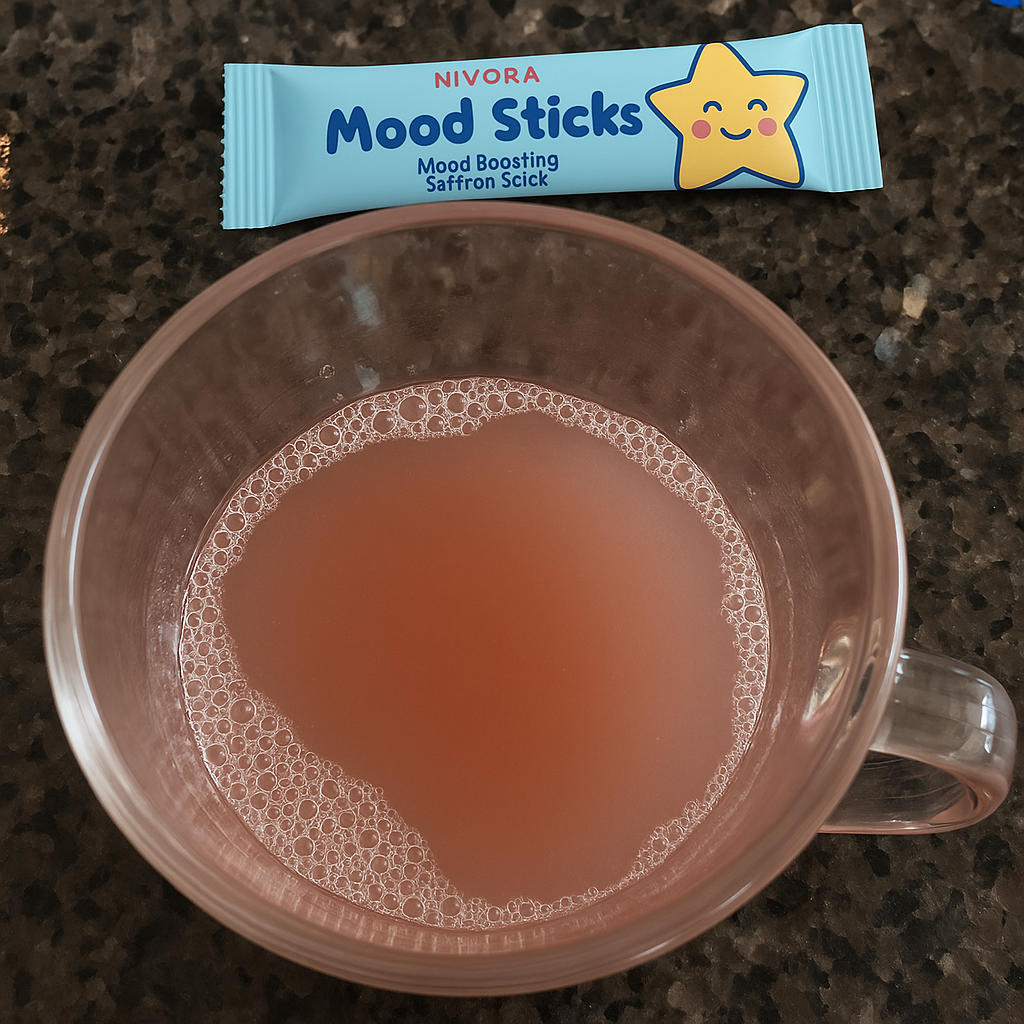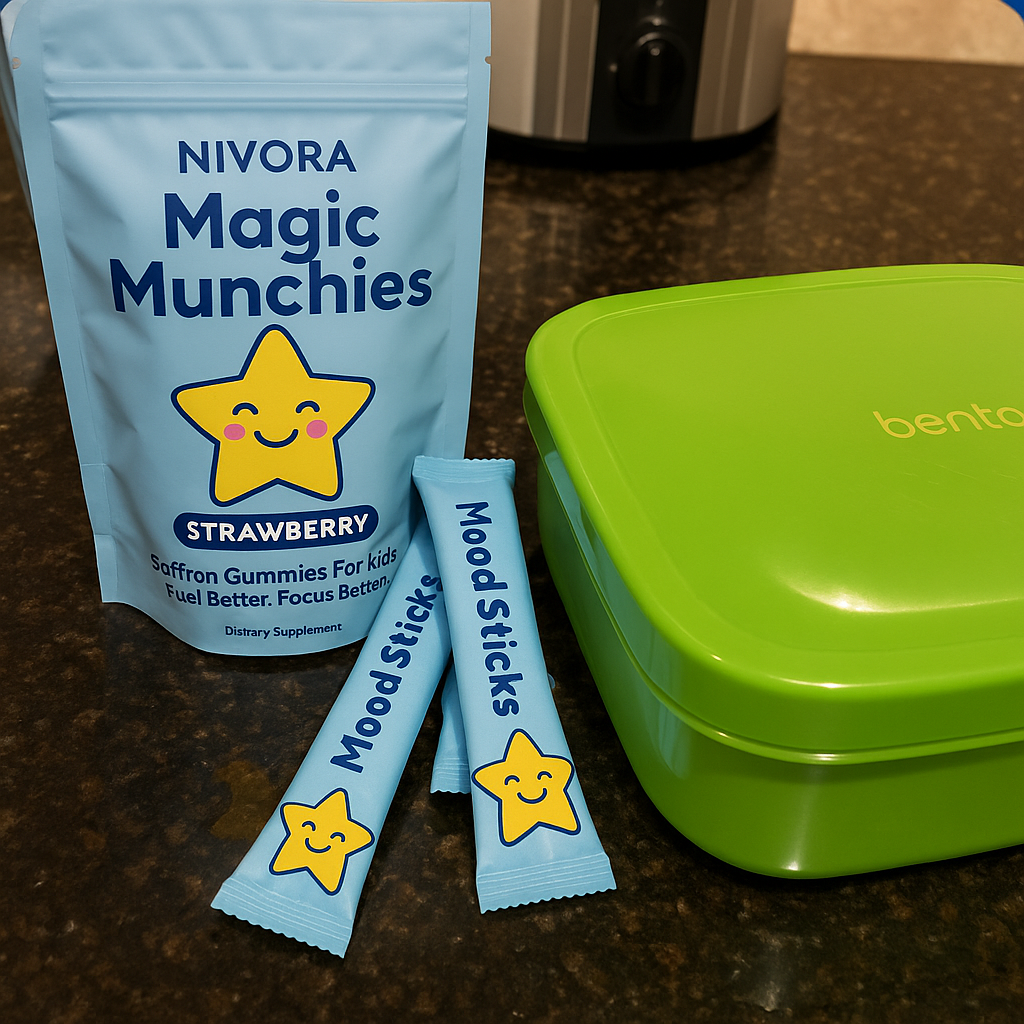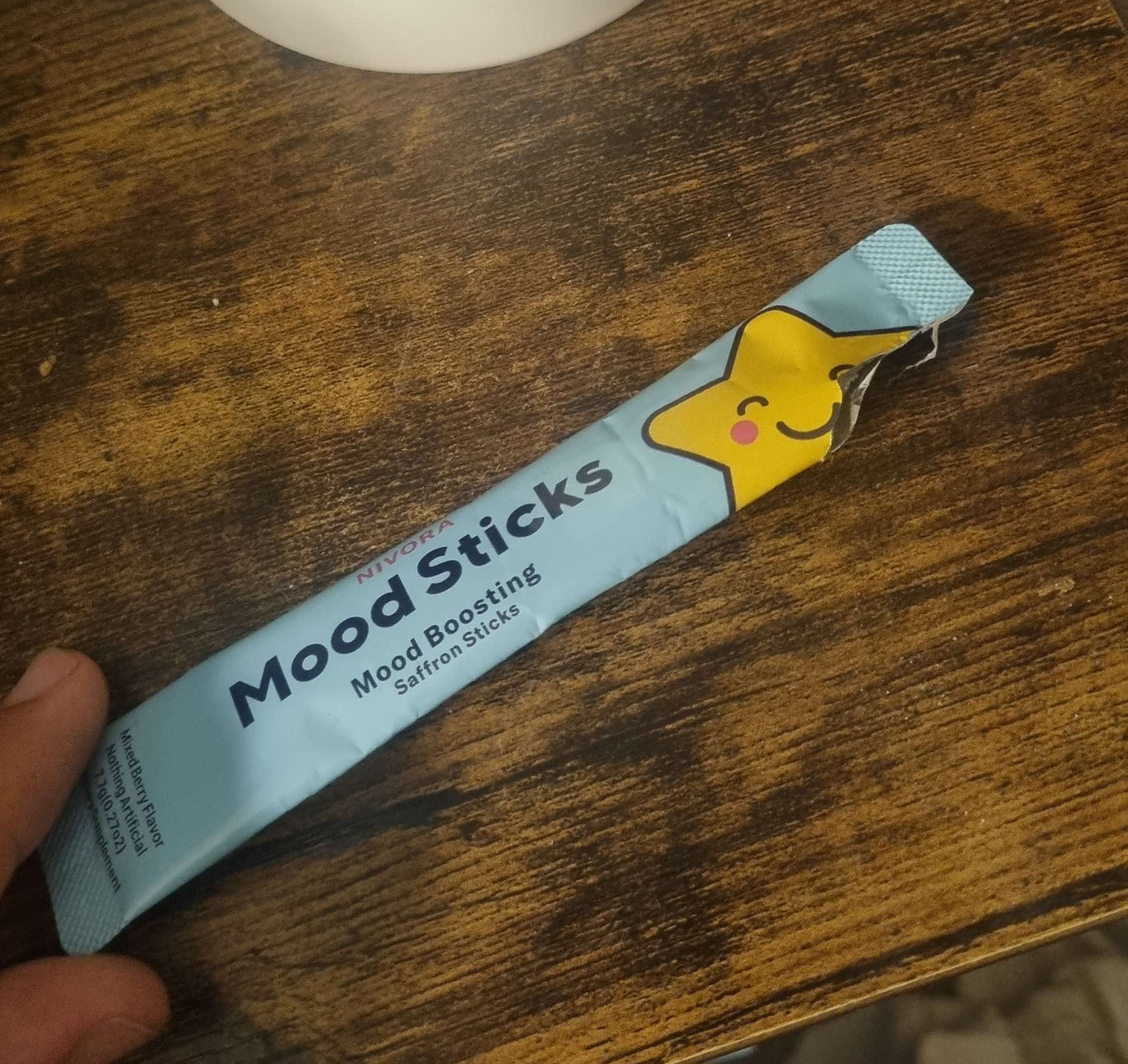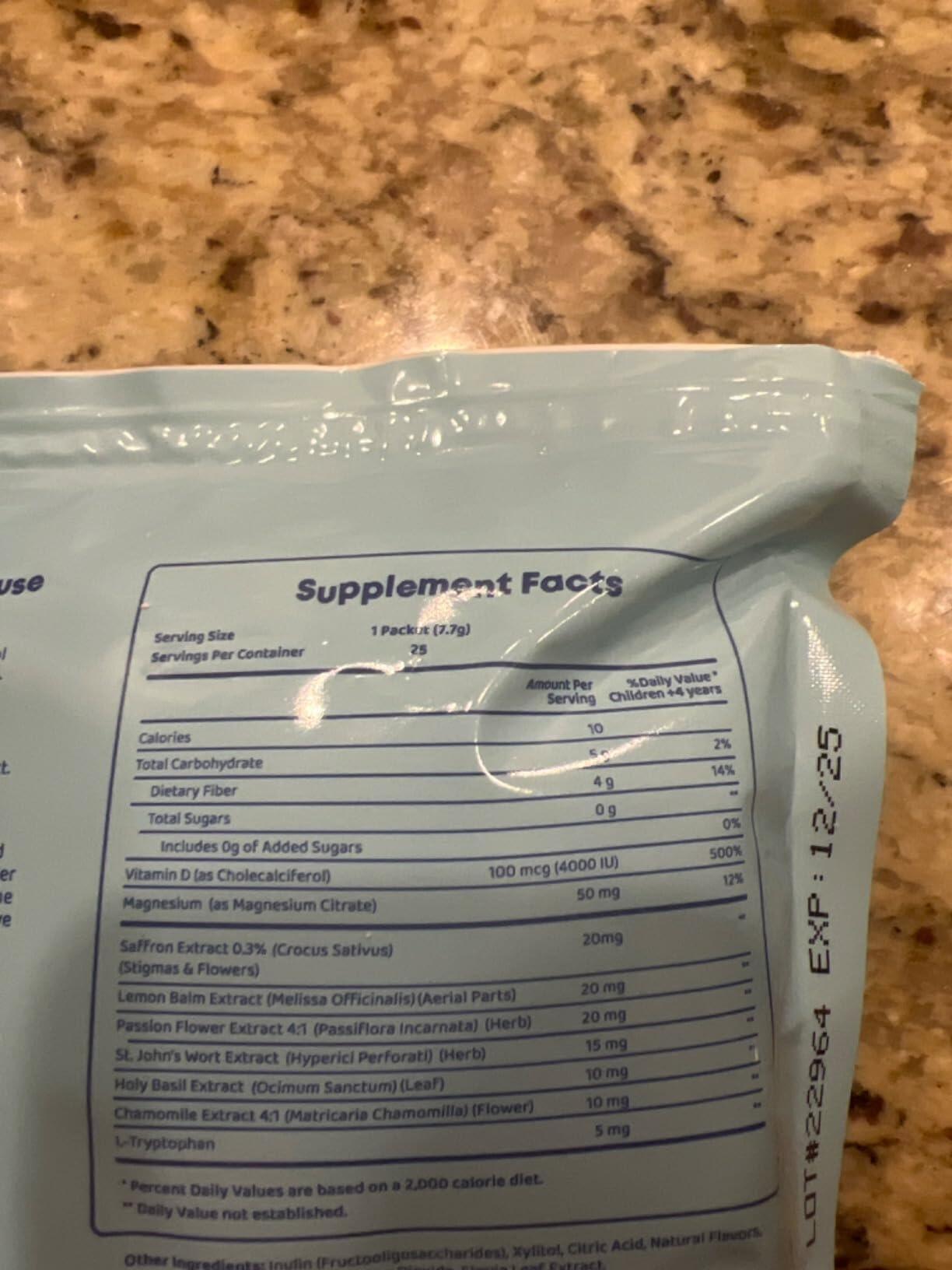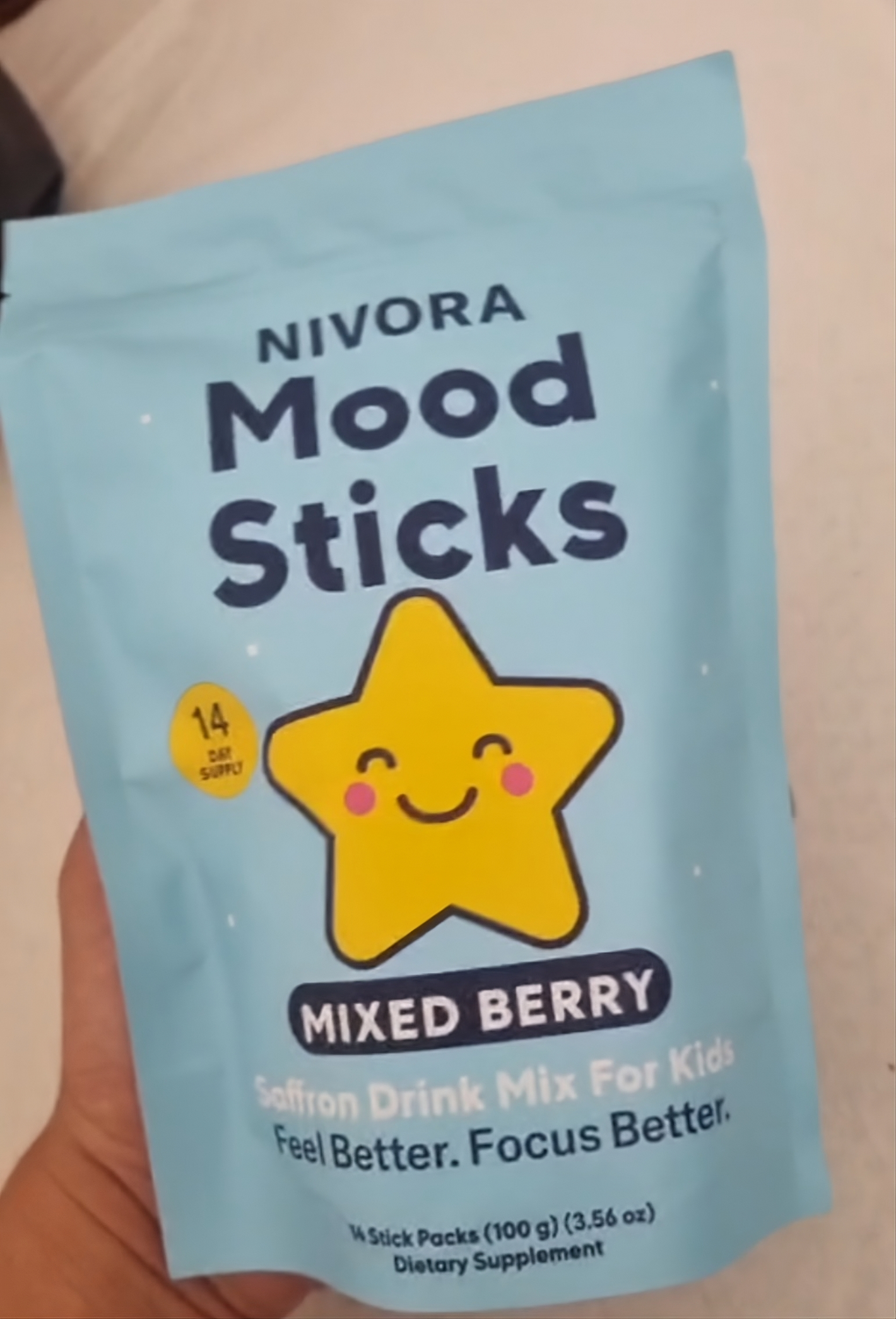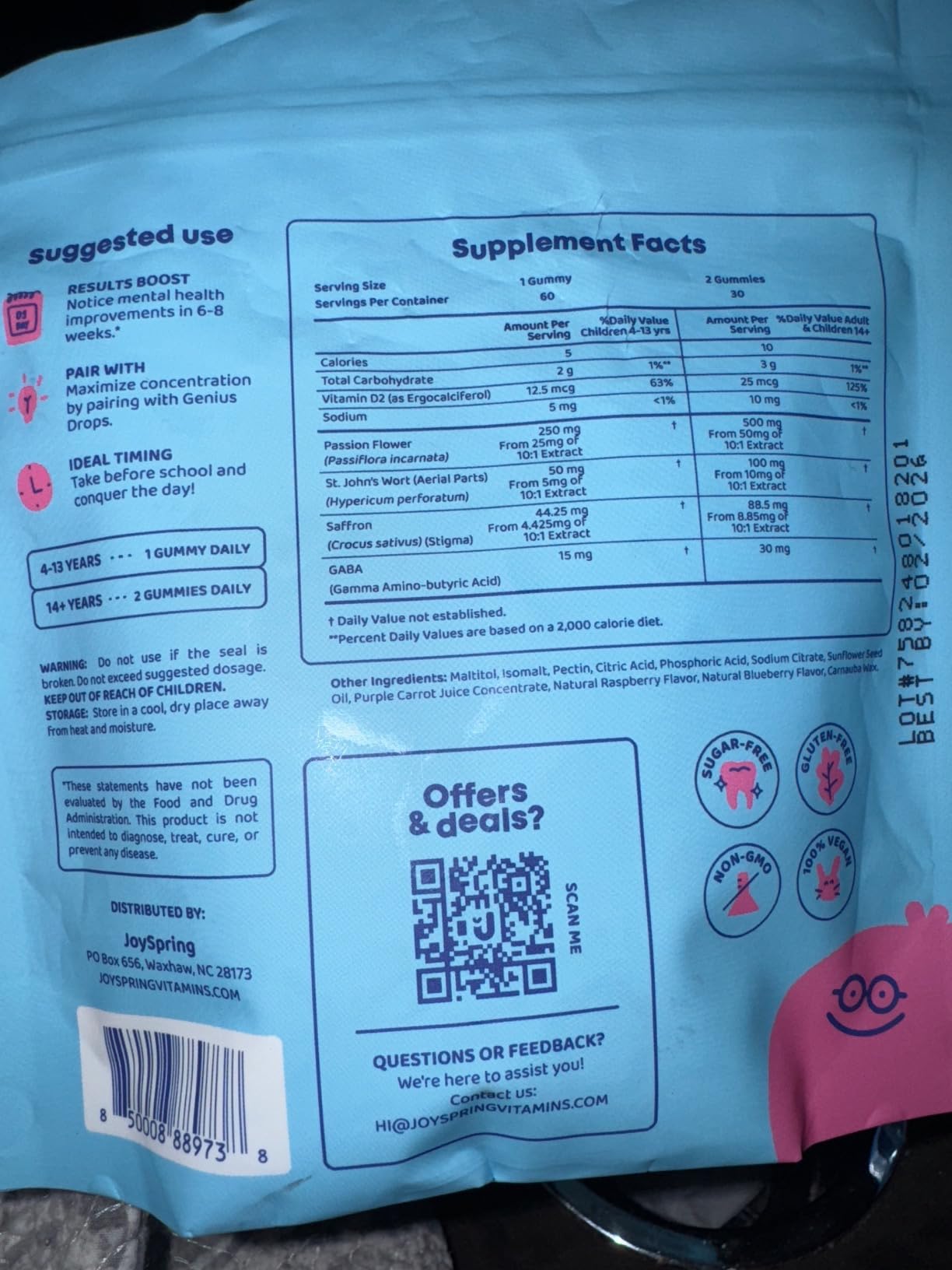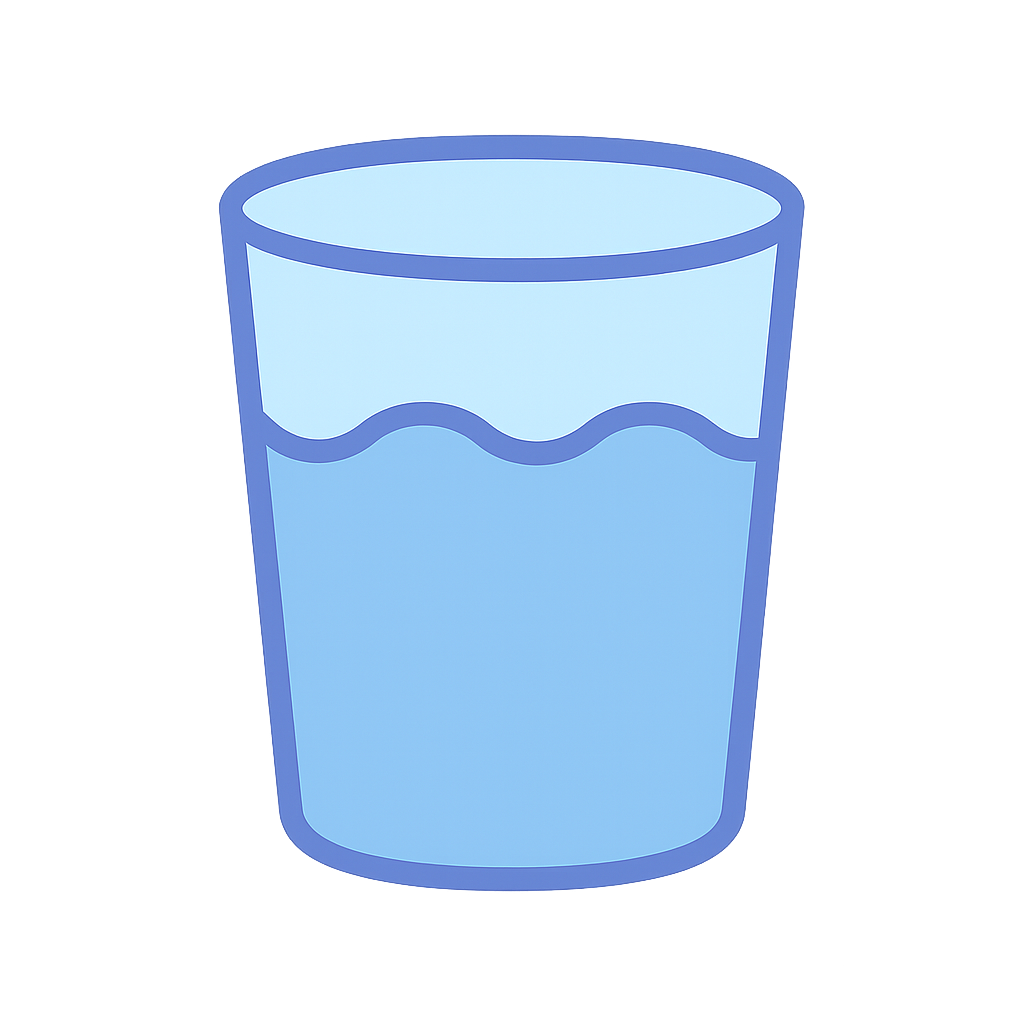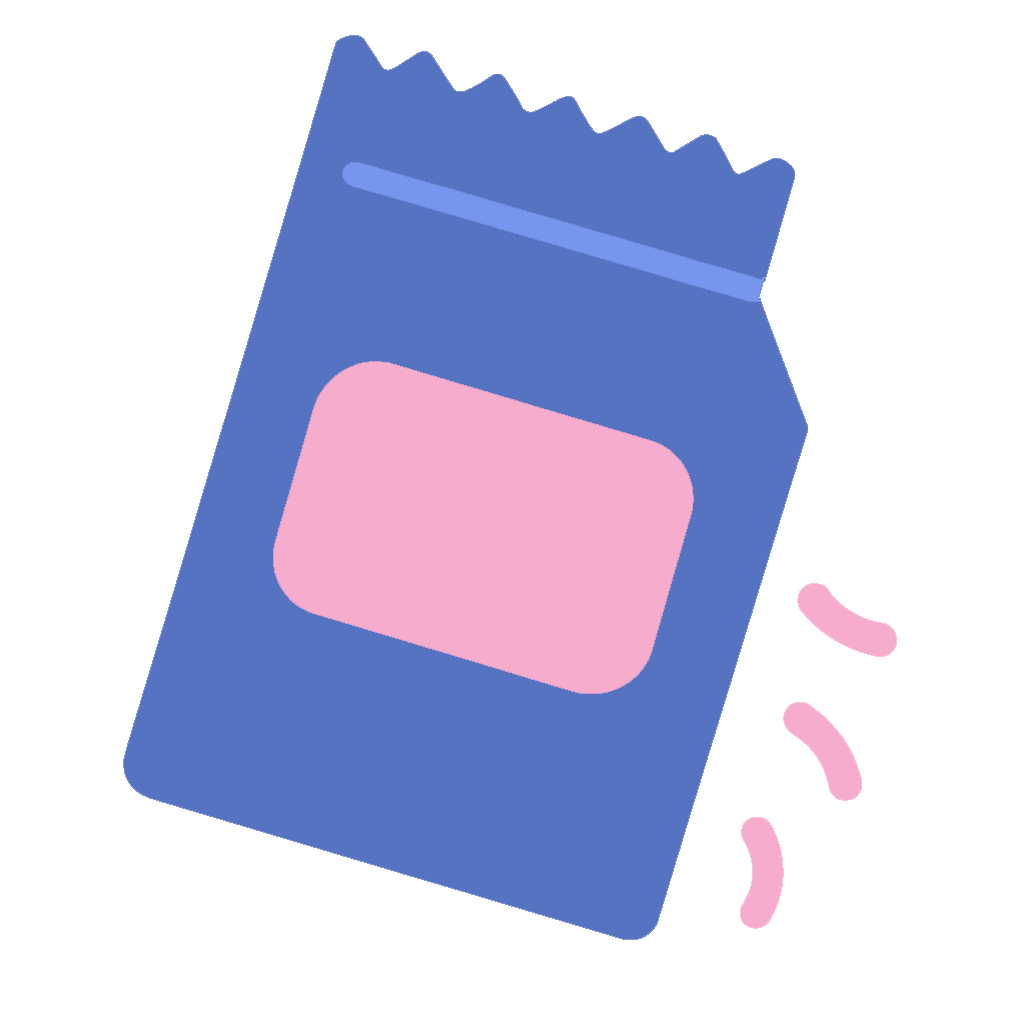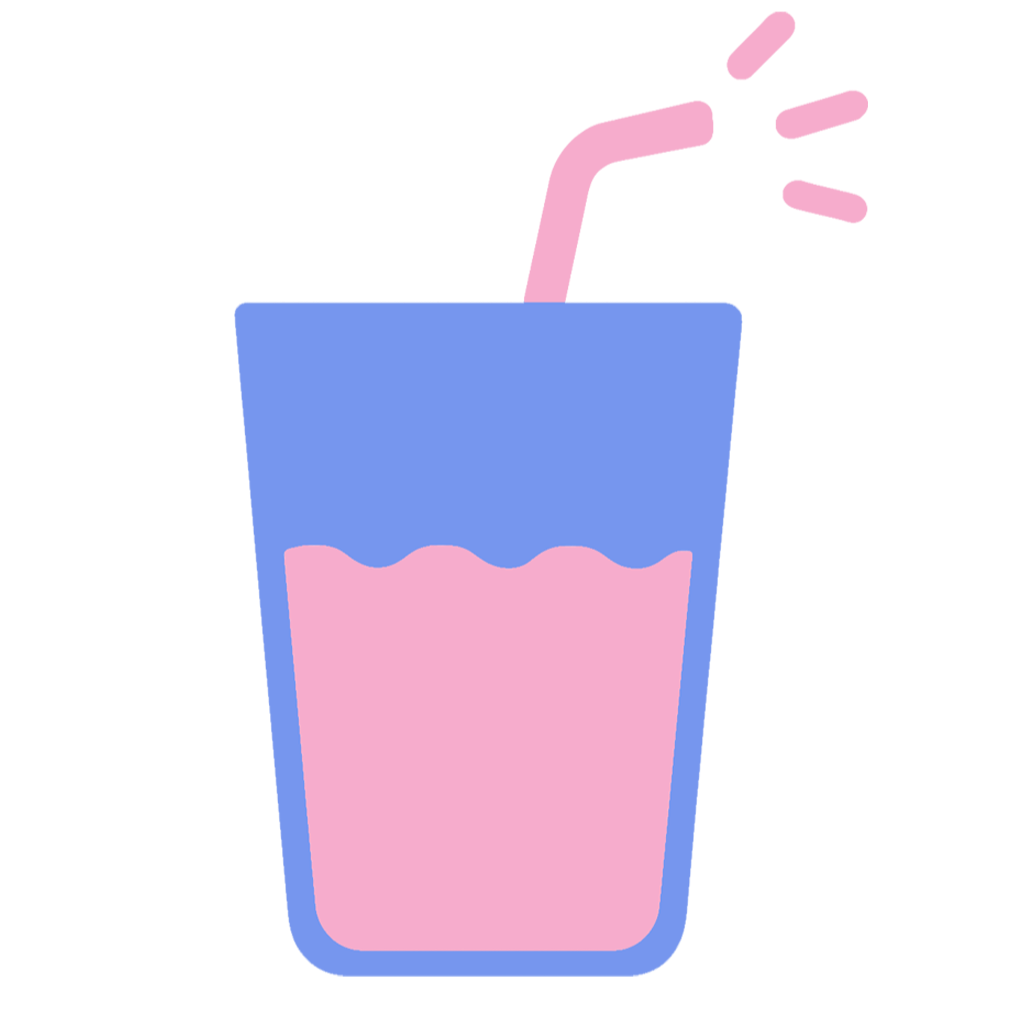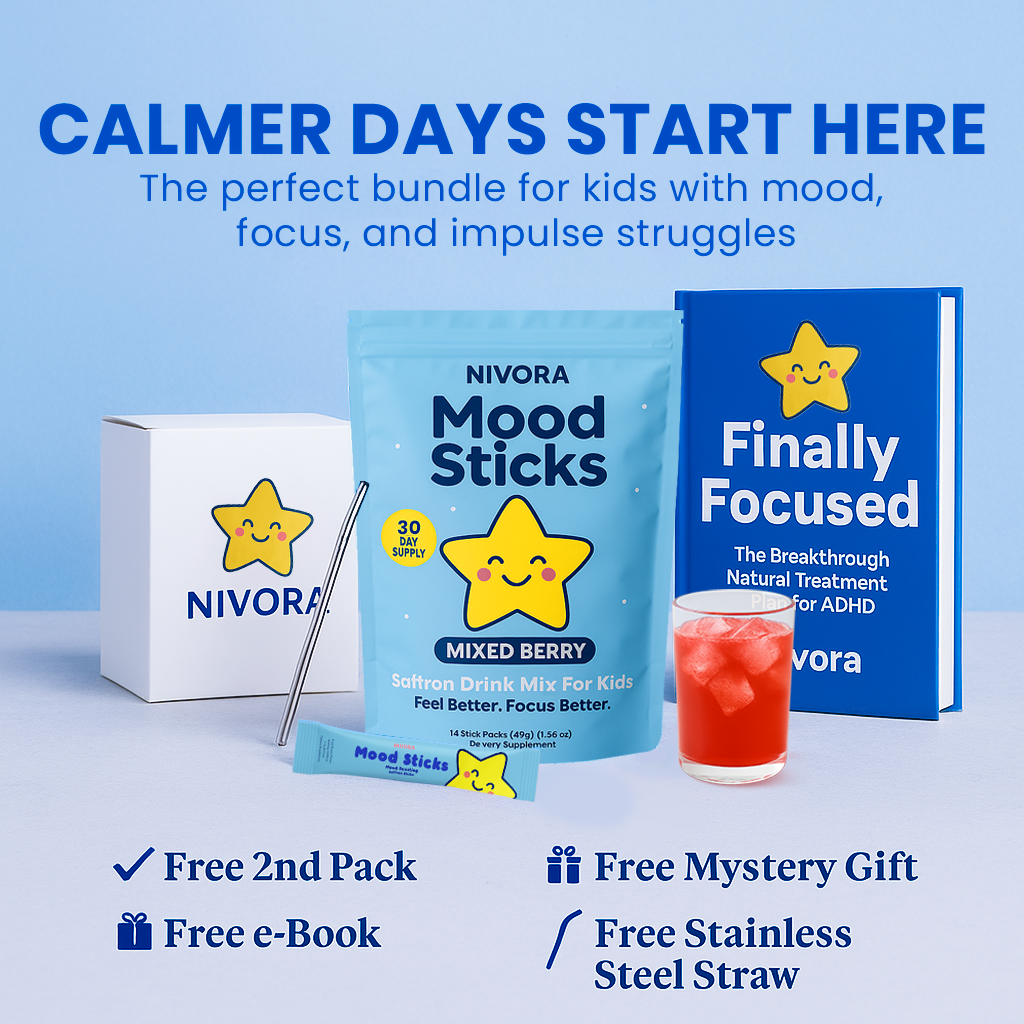

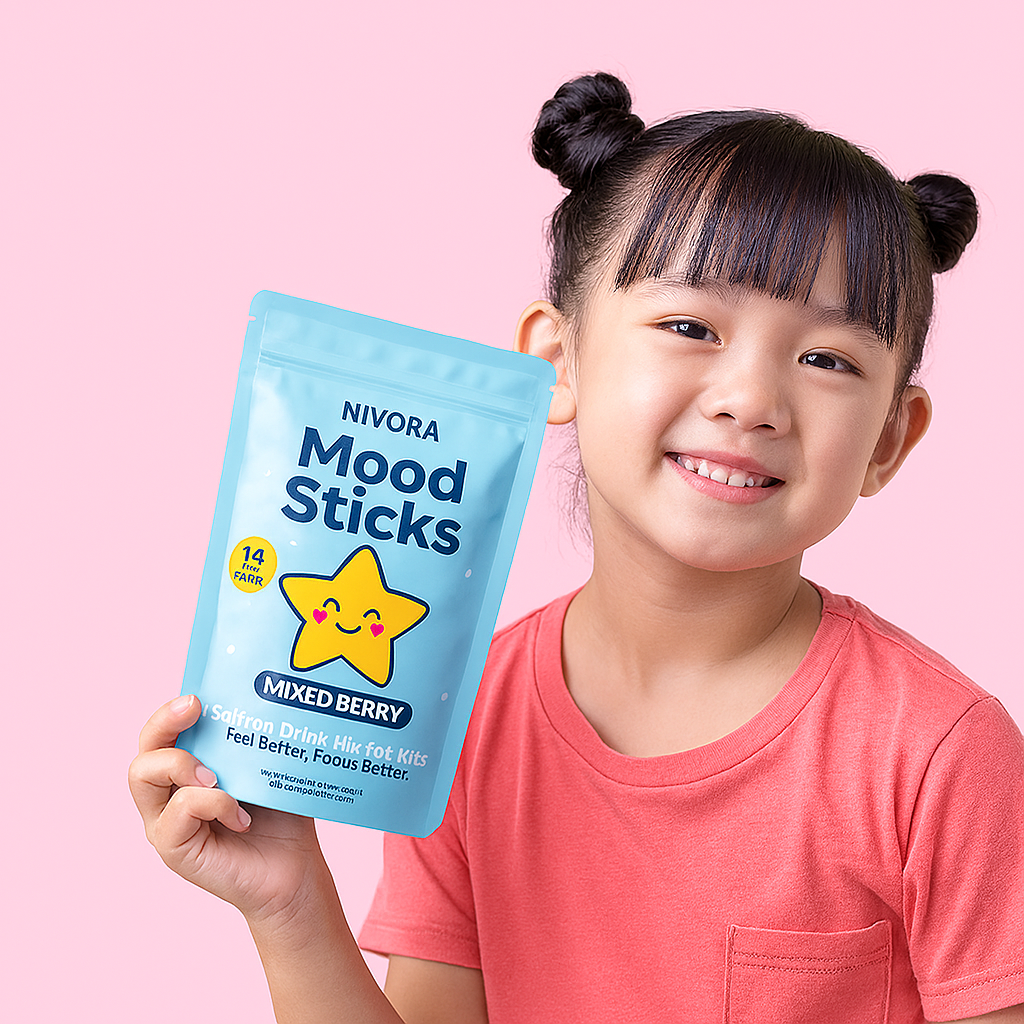
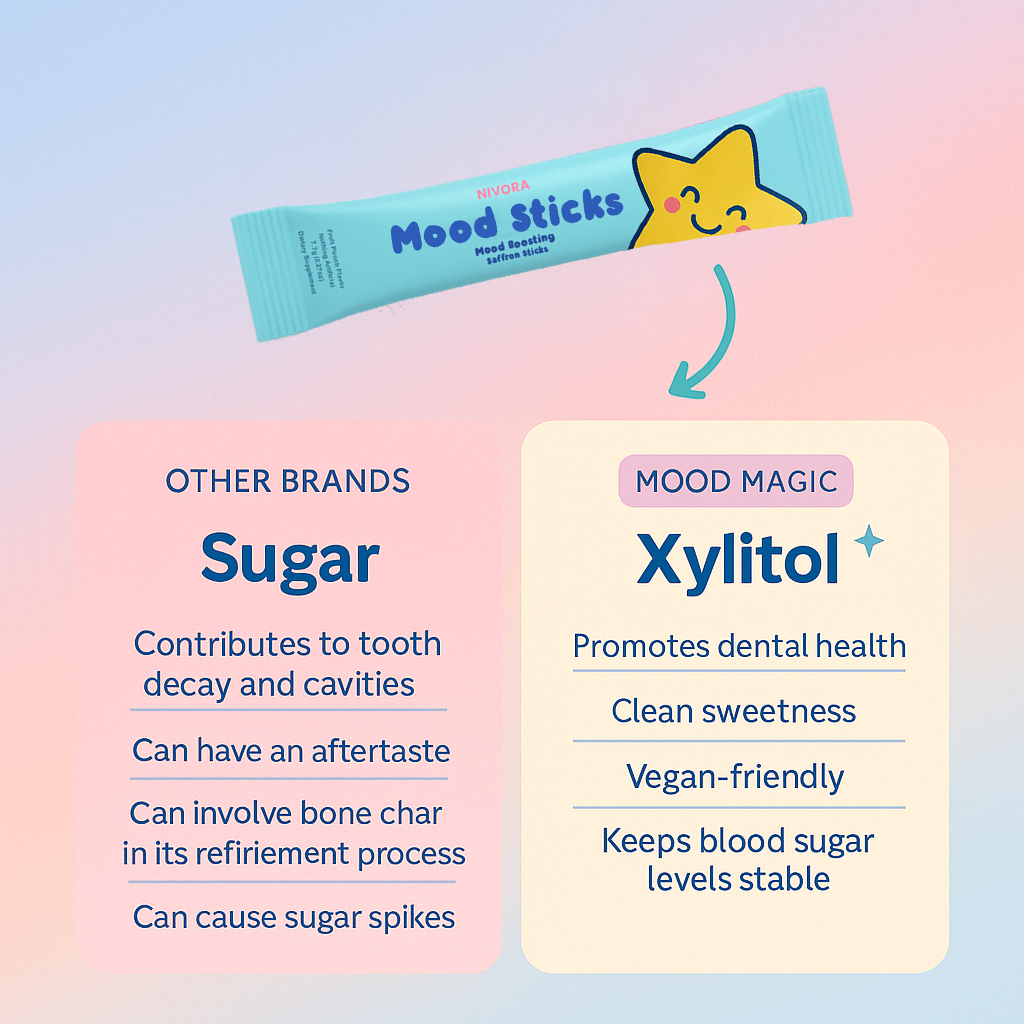
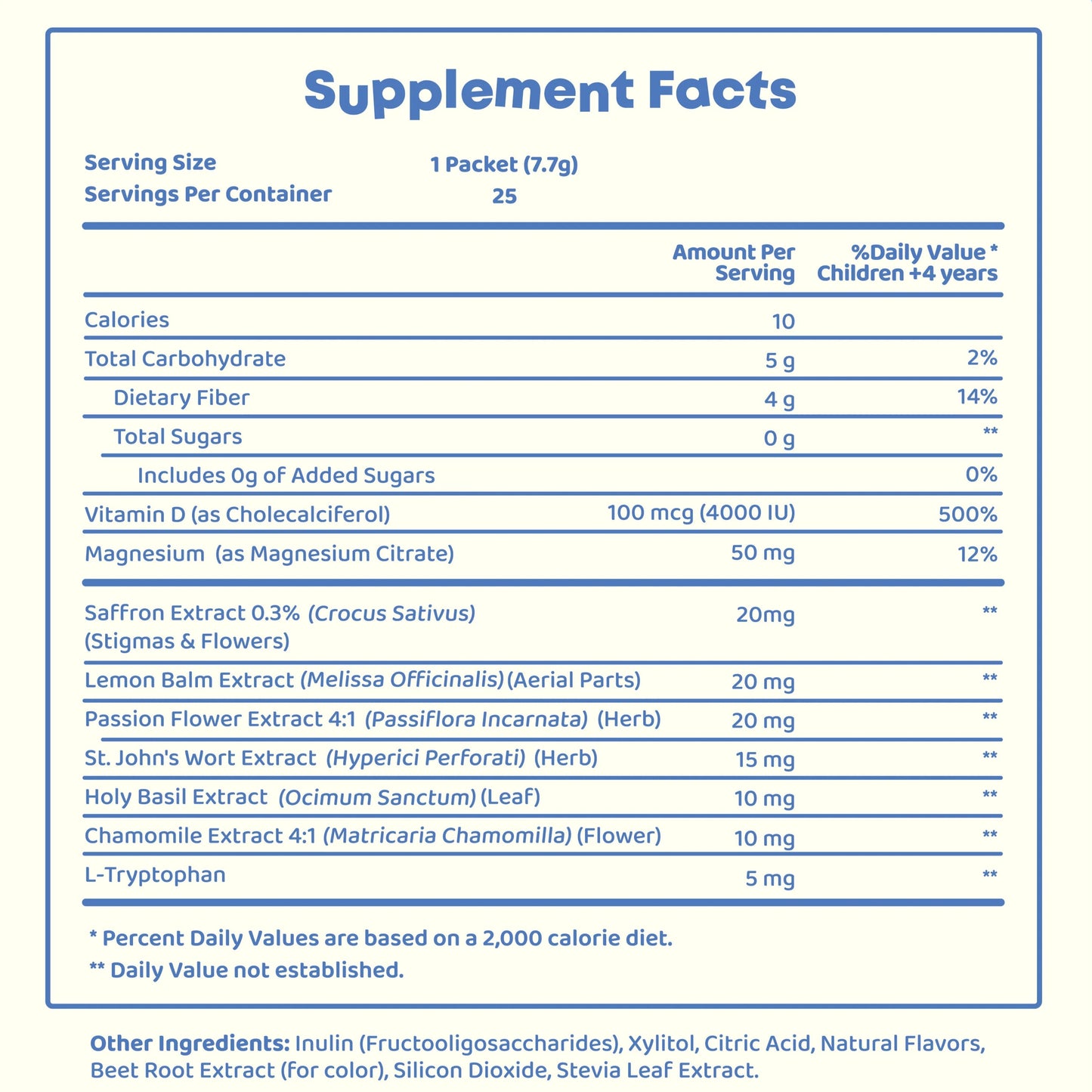
Real moms, real results. Here's what changed at home....
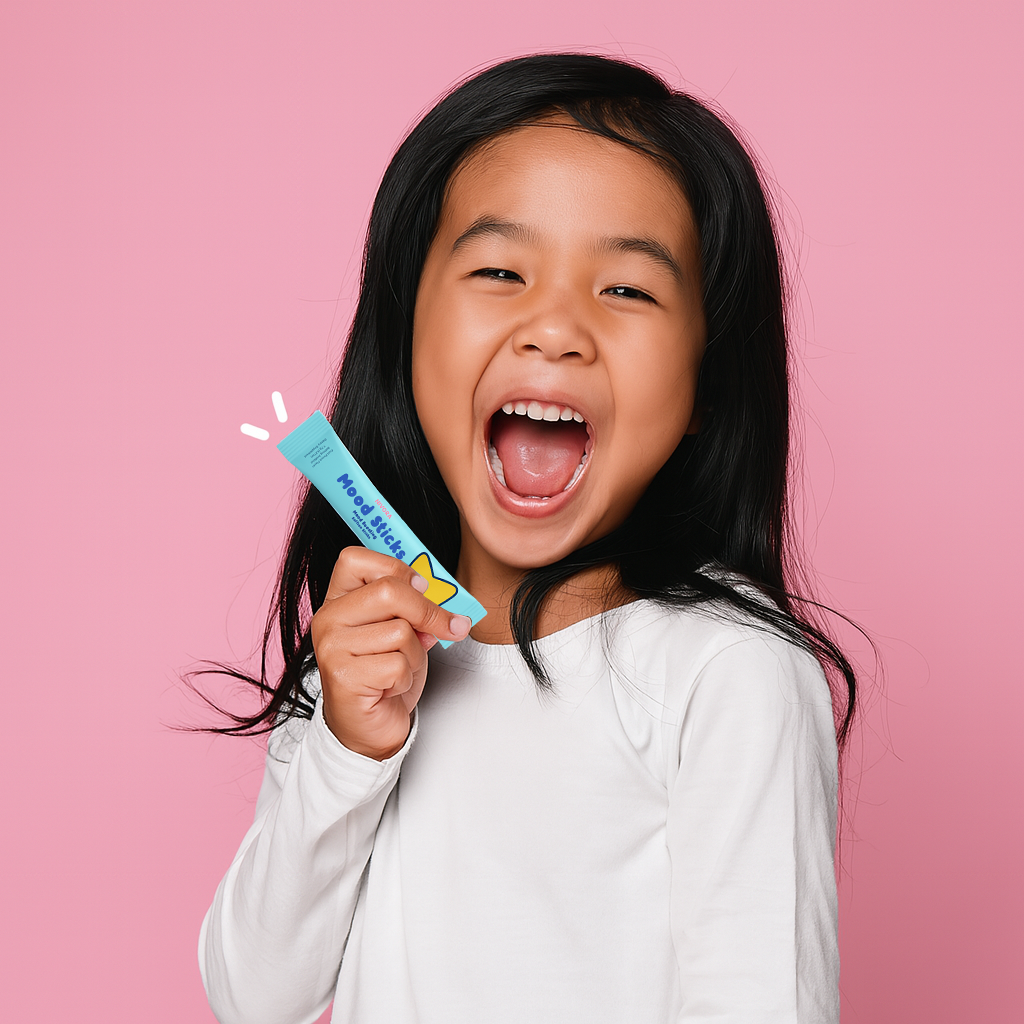
The Three-Stage “Off Switch” Mechanism
Stage 1: Hyperactivity Shutdown (Days 1–3)
Fast-acting herbs—holy basil, chamomile, passionflower—absorb quickly and help the nervous system settle, easing restlessness and fidgeting within the first 72 hours.
Stage 2: Emotional Stabilization (Days 4–7)
Medium-release actives—saffron, St. John’s Wort, L-tryptophan—build through mid-week to support dopamine/serotonin signaling so moods smooth out and impulse spikes ease.
Stage 3: Focus Restoration (Days 8–10)
Slow-build nutrients—lemon balm, magnesium citrate—finish the reset by reinforcing calm attention and steadier follow-through for daily tasks.
Inside the 8-Ingredient Formula
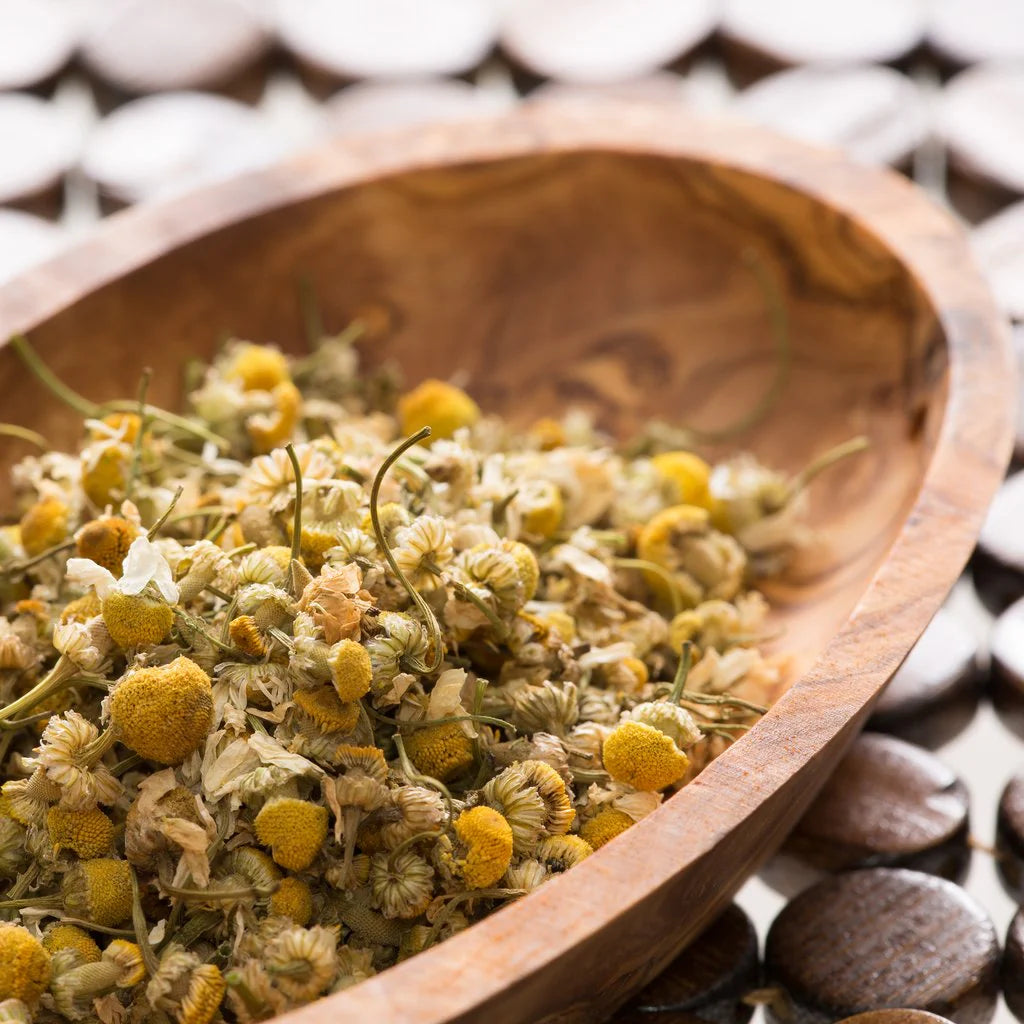
Chamomile (apigenin): Calms the enteric nervous system by acting at GABA sites, smoothing the gut-to-brain signal—supporting attention, emotional steadiness, and easier wind-downs in ADHD.

Holy Basil (eugenol, ursolic acid): Supports intestinal barrier integrity and calms gut-driven stress signaling, promoting a steadier baseline—supporting attention, stress resilience, and emotional regulation in ADHD.
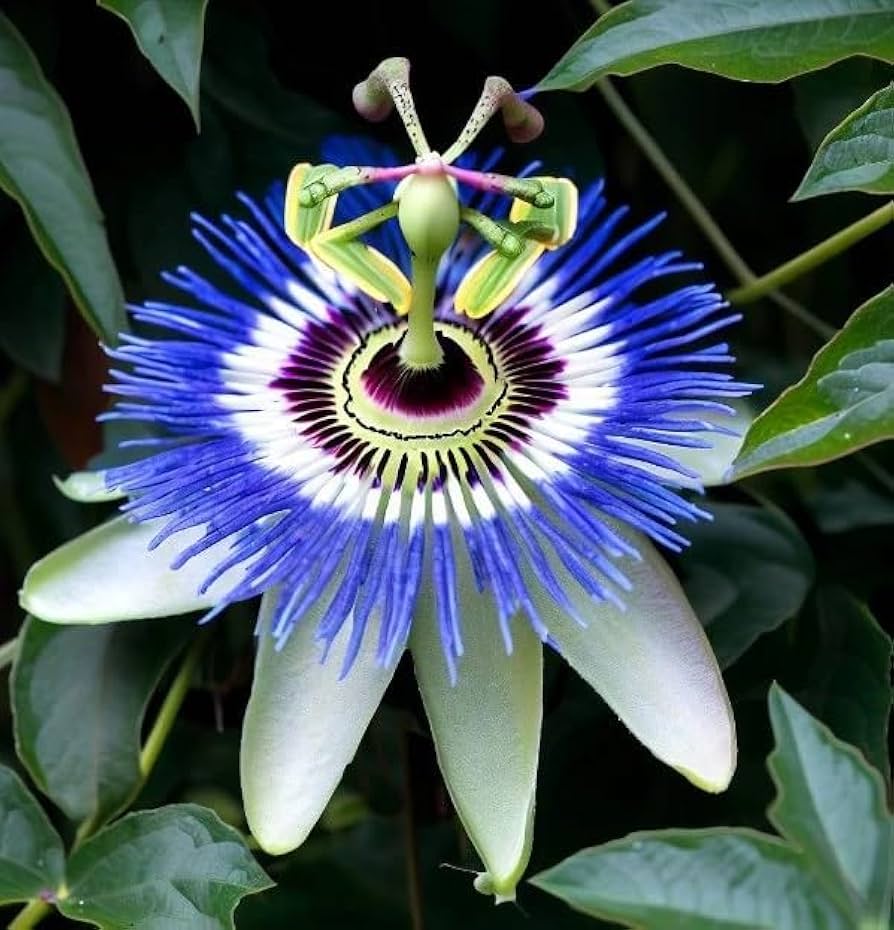
Passionflower (chrysin): GABA-supportive botanical that helps settle the enteric and central nervous systems, smoothing gut-to-brain signaling—supporting calm focus, reduced restlessness, and easier transitions in ADHD.

Saffron extract (crocin & safranal): Modulates dopamine and norepinephrine in the neurotransmitter cascade, reinforcing gut-to-brain synchronization. Supports attention, emotional regulation, and steadier focus in ADHD.

St. John’s Wort (hyperforin): Helps inhibit reuptake of serotonin, dopamine, and norepinephrine so signaling lasts longer—supporting attention, mood steadiness, and fewer crashes in ADHD.

L-Tryptophan: Serotonin precursor made in gut enterochromaffin cells; when the gut is calm, conversion and signaling improve—supporting attention, mood steadiness, and impulse control in ADHD.

Magnesium: Helps stabilize neural electrical activity and smooth neurotransmission (well-absorbed citrate form). Supports calm, sustained attention, and less jitteriness in ADHD.

Lemon Balm (rosmarinic acid) soothes gut inflammation and calms the enteric nervous system—priming the gut→brain pathway. This calmer baseline helps support attention and emotional regulation in ADHD.
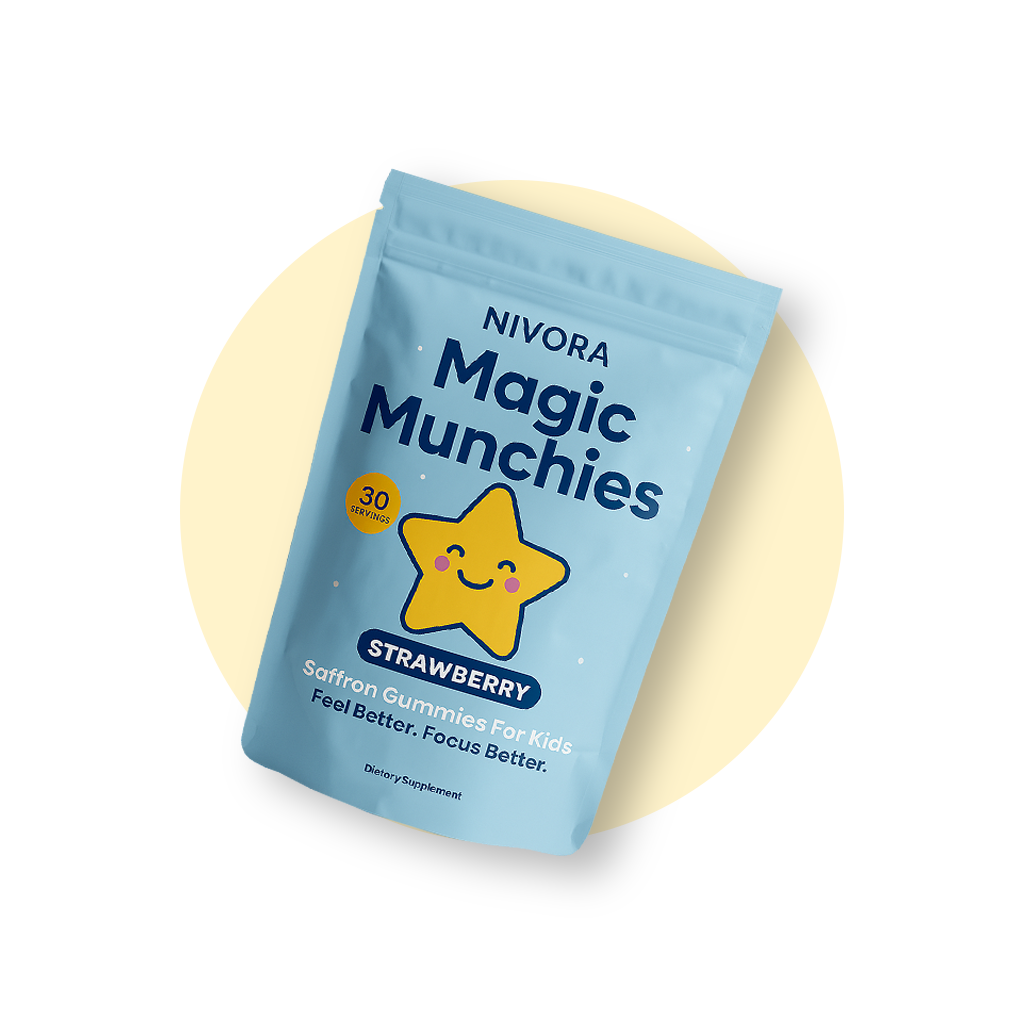
"My Kid Wouldn't Drink This"
That's exactly why we made Magic Munchies. The gummy-version of Mood Magic. Give them a try!
Why Mood Magic?
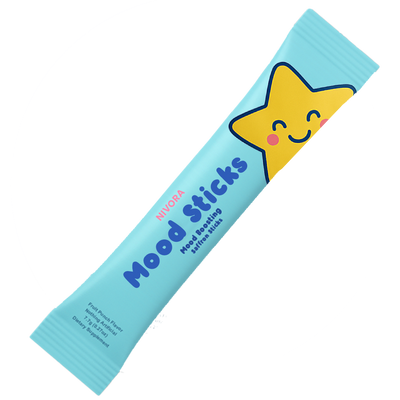
|
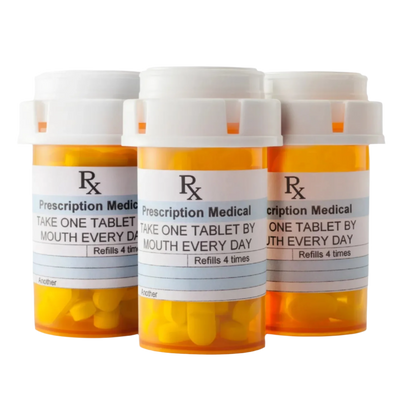
|
|
|---|---|---|
| Improved Self Regulation | ||
| More Emotional Stablility | ||
| Appetite Suppression & Weight Loss | ||
| Trouble Sleeping | ||
| Rebound Effects | ||
| Increased Anxiety |
What Parents Are Saying
Read about how Mood Sticks are helping parents similar to you!
94%
Reported fewer tantrums and better self regulation after 7 days of consistent use.
95%
Reported that their child's ability to focus improved greatly after 7 days of consistent use.
98%
Reported that their child experienced no negative side effects after 7 days of consistent use.
Statistics based on a sample group of 300 customers*
Frequently Asked Questions
Is it really safe for kids?
Is it really safe for kids?
Yes. Mood Sticks are made with natural, child-safe ingredients like saffron, magnesium citrate, and L-tryptophan. There are no artificial colors, sweeteners, or stimulants.
At what age can I start giving this to my child?
At what age can I start giving this to my child?
Mood Sticks are intended for children over the age of 4 years old.
Do I need to give this every day?
Do I need to give this every day?
Yes. For best results, Mood Sticks should be taken daily in the morning. It can be mixed into 3 to 4 oz of water or poured directly into the mouth like a pixie stick.
Is there sugar or artificial dye in this?
Is there sugar or artificial dye in this?
No. It’s naturally sweetened with chicory root and colored with beet juice. There are no artificial dyes, flavors, or preservatives.
Will it make my child drowsy or sedated?
Will it make my child drowsy or sedated?
No. Mood Sticks are not a sedative. It supports mood regulation and focus by gently helping the brain produce serotonin and dopamine — without making your child feel sluggish or out of it.
What does it taste like? Will my kid drink it?
What does it taste like? Will my kid drink it?
It tastes like sweet berries or fruit punch. It’s lightly sweetened with chicory root and colored with beet juice. Most kids drink it without any complaints.
Can I use it while taking other medications or supplements?
Can I use it while taking other medications or supplements?
Mood Sticks are drug-free and generally very well-tolerated, but if your child is on prescription medications, especially antidepressants or stimulants, consult your pediatrician first.

